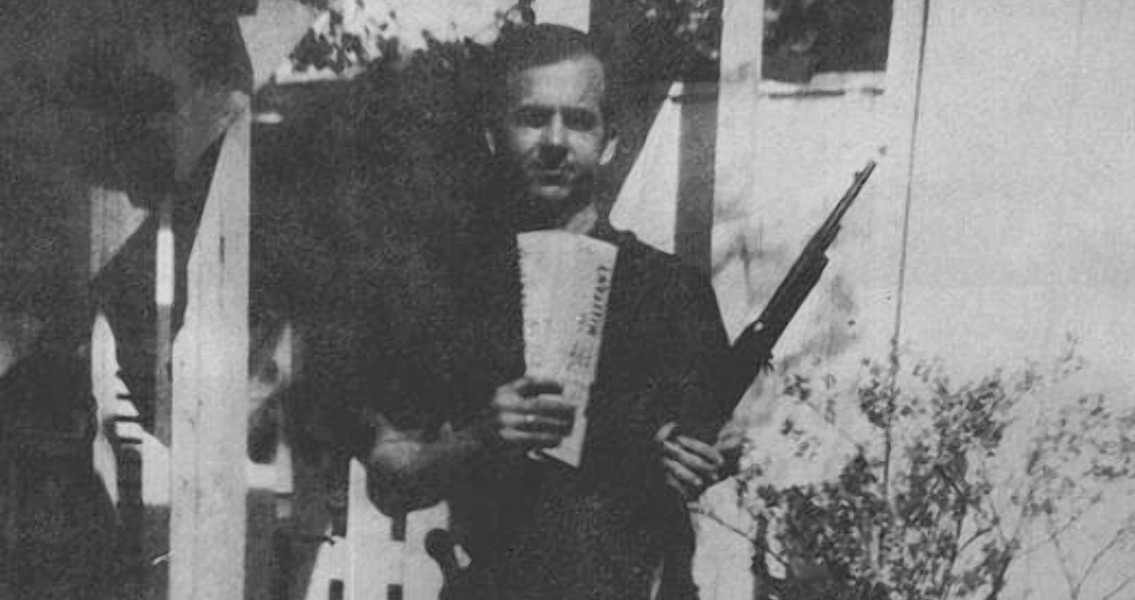<![CDATA[A new study by scientists from Dartmouth University has seriously questioned the conspiracy theories surrounding the assassination of American President John F. Kennedy on 22nd November, 1963. Over half a century since his assassination in Dallas, Texas, the death of 'JFK' remains one of the most controversial events in the history of the United States. By performing a 3-D stability analysis on the 'Lee Harvey Oswald in the Backyard Photo', the Dartmouth University scientists claim they have proven its legitimacy. After a ten month investigation by the Warren Commission, the official conclusion was that Kennedy had been assassinated by a lone gunman - Lee Harvey Oswald - who fired shots at Kennedy's motorcade from the Texas Book Depository. Oswald was arrested around 70 minutes after the assassination, after killing J.D. Tippit, a Texan police officer. Oswald never faced a trial, however. After two days in police custody, Oswald was shot by nightclub owner Jack Ruby live on TV as police transferred him from Dallas Police Headquarters to the County Jail. The official conclusions of the Warren Commission are still met with skepticism, however. A poll taken in 2013 revealed that a clear majority of Americans, 61%, believed that people besides Lee Harvey Oswald were involved in the Kennedy assassination. Suspects have ranged from the CIA, to weapons manufacturers, the KGB, Cuban Exiles and Extra-terrestrials. This latest study, however, adds support to the argument that Oswald acted alone. A key piece of evidence for conspiracy theorists is a photo seized by police when they searched Oswald's house following his arrest. The so-called 'Lee Harvey Oswald in the Backyard' photo shows Oswald holding a rifle identical to the one used to kill Kennedy, along with copies of two communist newspapers. Initially used as evidence that Oswald was the lone assassin, the photo soon became fuel to conspiracy theorists who claimed that the image had been tampered with as part of a conspiracy to build a character assassination of Oswald. It has long been argued that Oswald's features in the picture are inconsistent with other photos of him, that the lighting and shadows are unrealistic, and that the pose Oswald is striking is physically impossible. Oswald himself declared shortly after the photo's discovery that it was a fake. Professor Hany Farid, from Dartmouth University, teamed up with assistant professor Emily Whiting and graduate student Srivamshi Pittala to build a physiologically accurate 3-D model of Oswald, which they matched to the pose struck in the photo. By then adding the appropriate mass to each part of the model, they concluded that although Oswald appeared off-balance in the image, his pose would have been stable. The study also concluded that the lighting and shadow in the photo are physically plausible. As the study itself explains, Farid and colleagues results also disprove the assertion that the rifle in the image is not the same size as the one used to kill Kennedy. "In addition, our 3-D model of Oswald and his surroundings provide further evidence refuting other claims of photo tampering: the lighting and shadows are physically consistent, and the length of the rifle in Oswald’s hands is consistent with the length of this type of rifle." Farid has made something of a habit out of debunking accusations that the 'Lee Harvey Oswald in the Backyard' photo was tampered with. In 2009 and 2010 he wrote two studies refuting claims that the lighting and shadows in the image were inconsistent. The authors of the study hope that the technique they have developed could prove useful in analysing the plausibility of other photographs. As the study, published in the Journal of Digital Forensics, Security and Law, concludes, "With a simple adjustment to the height and weight, the 3-D human model that we created can be used to analyze the pose, stability, and shadows in any image of people." For more information: www.ojs.jdfsl.org]]>
Kennedy Assassin Photo Verified
